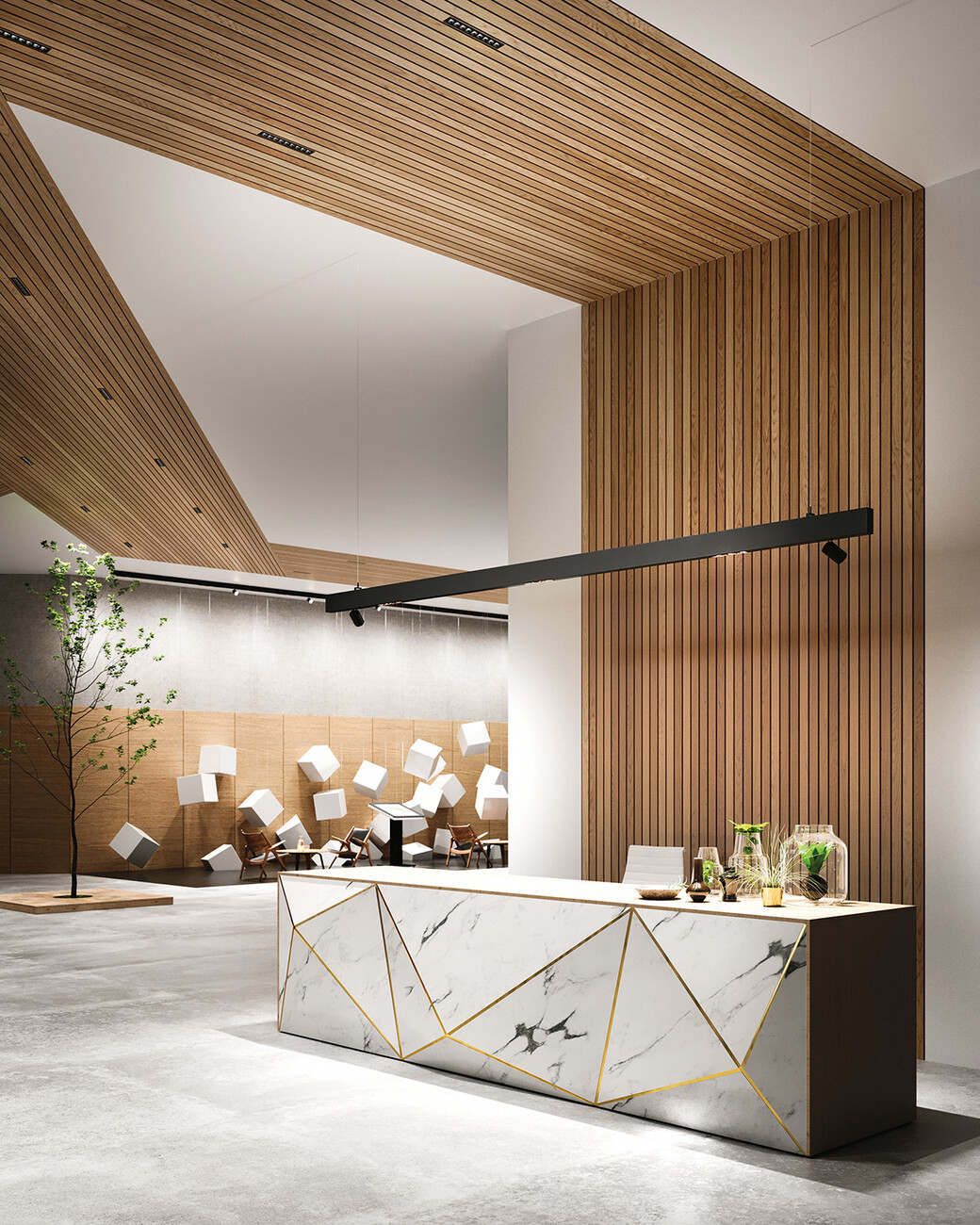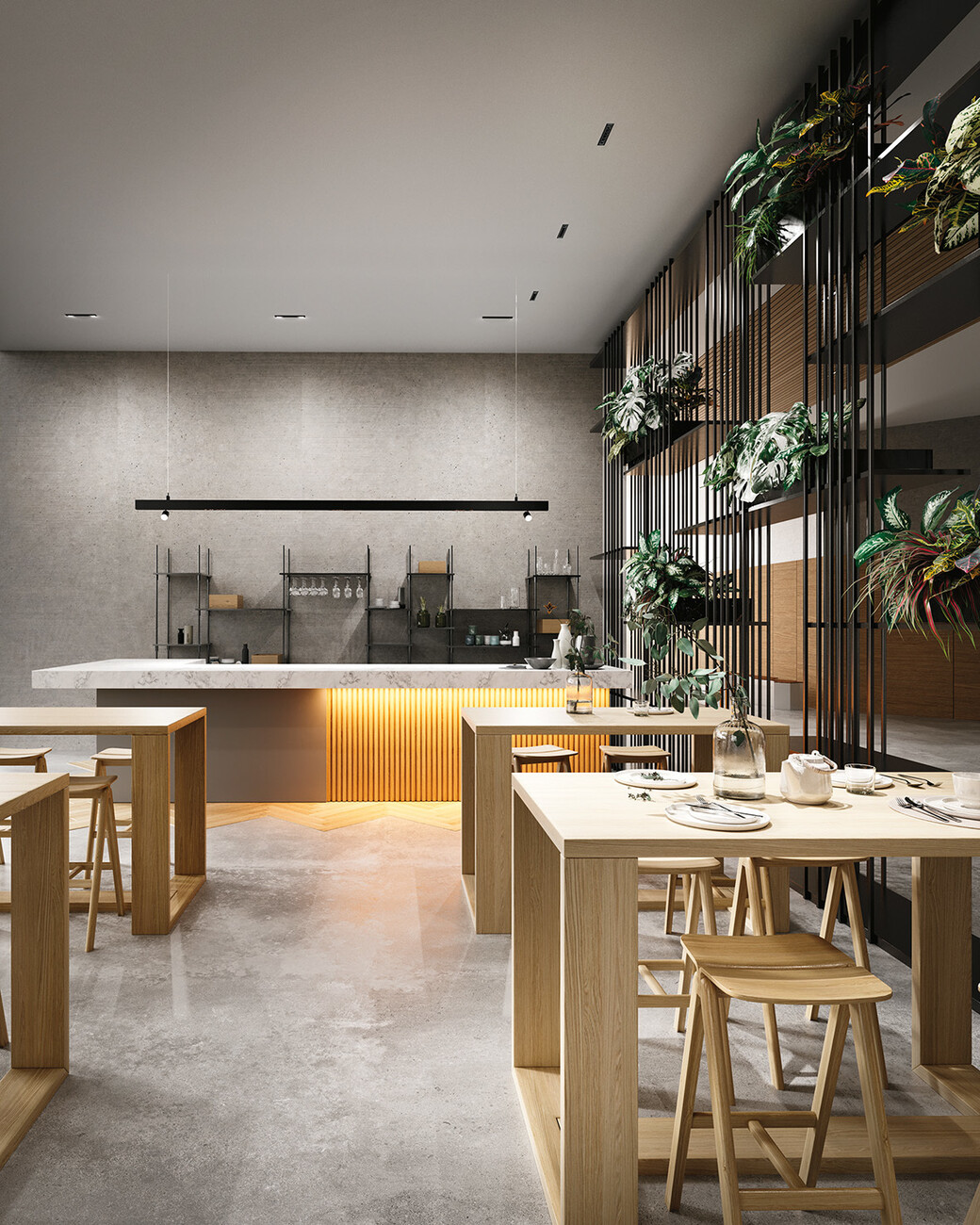Seamless light
Just imagine there’s a holistic lighting solution for interiors that can be tailored to suit a wide variety of architectural settings. A system with miniaturized LED spotlights that leaves nothing to be desired from strip via horizontal lighting to indirect and direct highlighting. Thanks to Zumtobel that need no longer be a dream: Together with Austrian design studio EOOS the lighting experts have successfully mastered the challenge. The “Supersystem integral collection” offers previously unknown scope and will appeal to lighting planners and architects alike. Harald Gründl, one of the founders of EOOS, gave us an insight into how the design was developed.
Anna Moldenhauer: Mr. Gründl, what makes the “Supersystem integral collection” so special?
Harald Gründl: What we have managed to do for the first time is to integrate a highly-efficient spotlight head into a track. A system that does not compromise and delivers an impressive 2000 lumen or so. The key idea behind the series is that we have linearized the previously distracting elements such as the spotlight head and track box. The project began with the vision of a gimballed spotlight head. It’s not the first lighting system on the market capable of disappearing into a track. However, as regards output, existing products do not offer a huge amount of scope and the spotlight heads are often visible, spoiling the overall impression. We wanted the light to appear as if by magic through a seam.
To what extent does the “Supersystem integral collection” differ from Zumtobel’s existing "Supersystem" LED lighting system?
Harald Gründl: It is an completion of it. With the new system the spotlight heads are miniaturized so much that they can disappear into a seam on the track while still offering steady light quality and the same functionality. What we have also altered is the technical infrastructure. While "Supersystem" is a low-volt system we have adapted “Supersystem integral collection” for a high-volt track, a three-phase track that allows greater flexibility. This means existing tracks can be retrofitted with the new system.
So can “Supersystem integral collection” be understood as a development platform?
Harald Gründl: Absolutely. And other products will follow. What is important is the integration of the lighting solution in architecture, be it retail, office, museum or home use. There are different possibilities from pendant to trimless systems. What I find especially attractive is integrating a three-phase track with surface-mounted spotlights into a groove in the ceiling. You turn the system 90-degrees at the base and can insert the lighting solution without the need for a channel. That also works with a concrete groove or by integrating it into louvre ceilings, say of wood. Thanks to its compact structure “Supersystem integral collection” can be easily fitted into a wide range of architectural settings.
What part of the development was especially challenging?
Harald Gründl: A difficult aspect was deciding what infrastructure to work with. The three-phase track offers enormous advantages for this broad scope of applications: You simply allow electricity to flow into one side and it’s possible to regulate the spotlight heads. To do this we developed a special lighting technology for the spotlights. The interface to the architecture was complex. “Supersystem integral collection” is not an isolated product, you need a systematic approach.
Were you able to rely on details from the original “Supersystem” product?
Harald Gründl: What the portfolio already had was the three-phase track, otherwise everything is new. It is not that easy to show in an image everything “Supersystem integral collection” can do or its as good as invisible mounting. The best way to experience the complexity and homogeneous elegance of the lighting solution is in the room itself.













